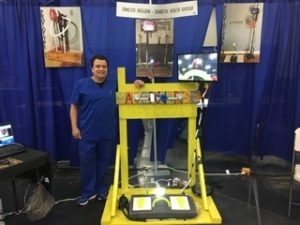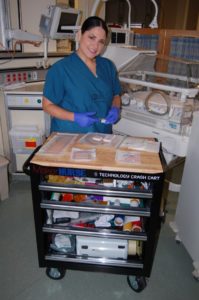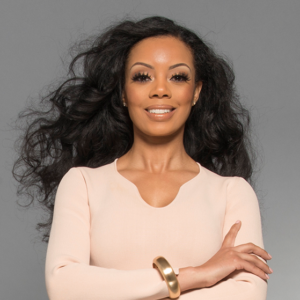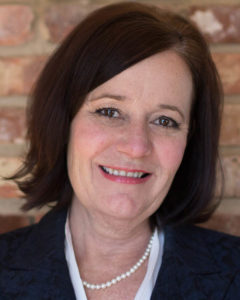
Nurses Find Success in Growing Field of Medical Cannabis Nursing
Fame Conway, RN, has seen firsthand how medical cannabis can be a game changer when it comes to fighting chronic illness. Decades of suffering from chronic inflammation and autoimmune disorders made it challenging for Conway to juggle her busy life as an operating room (OR) nurse and mother of two.
Then in 2016, a devastating car accident killed Conway’s son and left her with a femur fracture and an uncertain future.
“After the accident, I suffered from intense pain and Post-Traumatic Stress Disorder (PTSD),” Conway says. “I wasn’t sure if I would ever walk again.”
During her long recovery, Conway began researching the medical uses of cannabis. She was intrigued by research showing how it could ease symptoms ranging from chronic pain to nausea and she felt the knowledge could also benefit her clients.
A member of the Cannabis Nurses Network (CNN), Conway is one of many nurses across the country who is increasing her knowledge of cannabis and its use in modern medicine. As of June 2019, eleven states and Washington, D.C.., have legalized it for recreational use for adults over 21, and 33 states have legalized medical cannabis. Yet regardless of whether a state has enacted legislation, it is estimated that several million Americans currently use cannabis and that it’s a topic that interests many patients.
Conway took online courses through the American Cannabis Nurses Association (ACNA), where she learned about the endocannabinoid system (ECS), a network of receptors that affect appetite, mood, memory, pain, and other physiological functions. Graduates of ACNA’s courses are deemed competent in cannabis nursing.
“The ECS isn’t covered in most nursing programs, but it’s important for nurses to achieve a better understanding of ECS, how it works and how, and why cannabis can be a safe and effective medication,” Conway says.
After adopting a holistic lifestyle that included a plant-based diet and cannabis products when needed to combat pain and PTSD, Conway found she was able to reverse her chronic inflammation and autoimmune diseases in a natural way.
“I learned that whole plant nutrition supplemented with cannabinoids has the ability to regenerate health and restore wellness,” Conway explains. “I’m now able to enjoy an inflammation-free life without taking medication, and I no longer suffer from pain, anxiety, psoriasis, and insomnia.”
Knowing she wanted to help others suffering from autoimmune diseases and chronic inflammation, Conway launched GraceandFame.com, and has created an online health program. She also advises clients on how to adopt a plant-based diet and find the right cannabis product to safely and effectively treat their individual health condition.
Helping Women Through Life’s Different Stages
A midwife for over 20 years, Sakina O’Uhuru, CNM, RN, co-founded Black Ash Cannabis in Fort Lee, New Jersey last year after seeing the benefits of CBD oil, which is made by extracting CBD from the cannabis plant, then diluting it with a carrier oil such as hemp seed or coconut.
“CBD oil has been shown to relieve pain, reduce anxiety and depression, and alleviate cancer-related symptoms such as nausea and pain,” O’Uhuru says. “It also helps to reduce symptoms of menopause such as hot flashes, mood swings, and insomnia.”
After seeing the positive effects of CBD oil, O’Uhuru decided to integrate it into her practice. She now sells a CBD oil, derived from hemp plants, that is legal in all 50 states.
“I had clients who were inquiring about the benefits of cannabis and I wanted to be able to answer their questions and address their health needs,” says O’Uhuru, who proceeded to take online cannabis education classes and join the CNN prior to launching Black Ash Cannabis. “I think it’s important for nurses to be able to answer questions about medical cannabis, proper dosing, and the different methods that can be used to administer cannabis that include smoking, edibles, and tincture forms (that work sublingually by applying a drop under your tongue).”
O’Uhuru has worked as a midwife for over 20 years and is the author of Journey to Birth: The Story of a Midwife’s Journey and a Reflection of the Heroic Women She Served Along the Way.
“I work with women of all ages, through childbearing age to menopause,” O’Uhuru says. “I see my training as a cannabis nurse as another part of the cornucopia of services I offer my clients.”
Resources for the Canna-Curious
The American Cannabis Nurses Association (ACNA) is currently the only professional nursing organization working towards being recognized by the American Nurses Association as a certifiable nursing sub-specialty. In conjunction with The Medical Cannabis Institute, ACNA offers an online course for nurses, as well as resources for nurses who want to learn more about medical cannabis and how it can be safely and effectively used to manage a patient’s health condition.
Patients Out of Time is a non-profit educational charity dedicated to educating health care professionals and the general public about the therapeutic use of cannabis and the ECS system. They hold an annual conference and offer educational resources and information on their site.
The Cannabis Nurses Network was formed in 2015 and offers professional development courses networking, professional recognition, and legal and medical advocacy.
Cansoom offers nurses and other medical professionals classes to become medical cannabis consultants. Founded by Lolita Korneagay, MBA, BSN, RN, Cansoom courses equip nurses with the knowledge they need to assist patients in consuming cannabis safely and effectively.
Cannabis Education Comes Full Circle
Vanessa Cruz, LPN, of Pueblo, Colorado, has always embraced traditional alternatives in health care. As a master herbalist and end-of-life doula, Cruz thought adding cannabis nurse to her extensive resume was a natural progression.
“I’ve been a nurse for over 15 years and have worked in hospice, home care, and in a hospital setting,” Cruz says. “In home care, I encountered a lot of patients who had heard about medical cannabis and had a lot of questions about whether it might benefit their health condition.”
Cruz took over 30 hours of continuing education courses through the ACNA and discovered that medical cannabis had the potential to treat a number of health conditions. She also joined the CNN to network with other nurses who had an interest in the field.
“As an end-of-life doula, I’ve found many patients who prefer medical cannabis over morphine because it can combat their pain with fewer side effects,” Cruz says. “It also helps patients who are terminally-ill and may be experiencing anxiety or nausea as a side effect of cancer treatments.”
While opioids can produce side effects such as constipation and nausea, and prolonged use can lead to addiction in some cases, Cruz says patients view cannabis as a more holistic alternative. She now offers paid consultations to clients through her business, Traditional Holistic Care.
“I meet with patients who are seeking direction on state-approved medical diagnoses for medical cannabis and have questions on how to obtain a medical cannabis card, and the right product and dosage for their medical condition,” Cruz says. “I’ve seen the potential cannabis has in treating seizure disorders [and] muscle spasms, such as those associated with multiple sclerosis.”
As it continues to grow in popularity, Cruz encourages all nurses to gain an understanding of the field and expand their knowledge of what it means to be a cannabis nurse.
“At some point, all nurses are going to encounter a patient who is using cannabis,” Cruz says. “It’s important for them to be able to determine if there are any potential cannabis-prescription drug interactions [and] how they can answer a patient’s questions and ensure the safe use of cannabis.”
Helping Patients Become Cannabis Confident
In Honolulu, Hawaii, Me Fuimaono-Poe, FNP-BC, serves as owner of the Malie Cannabis Clinic, a medical practice that provides marijuana education evaluations, education, and electronic approval for medical marijuana cards.
“We see patients with a wide variety of qualifying conditions, with the most common being pain,” Fuimaono-Poe says. “My youngest patient is about three months old and my oldest patient is 103.”
Fuimaono-Poe first became interested in cannabis after meeting Dennis Peron in 1997 at the first Cannabis Buyers Club in San Francisco. Peron, an American activist and businessman, was an early leader in the fight to legalize cannabis.
Her interest led her to take online classes through the ACNA and the CNN.
“I also attended several cannabis conferences throughout the United States so I can stay up on the latest research,” Fuimaono-Poe says. “There’s currently no certification for a cannabis nurse, but we’re working to change that. The ACNA has been actively involved in getting cannabis nursing to be seen as a nursing sub-specialty in the same way as diabetes, oncology, and critical care.”
In 2016, Fuimaono-Poe, who had previously worked in both a hospital and family medical practice, opened the Malie Cannabis Clinic, dedicated to educating patients about medical marijuana. She notes that even in states where medical cannabis isn’t yet legal, patients have questions about how cannabis might have the potential to help their specific health condition.
And since many dispensaries don’t have nurses on staff, nurses can counsel patients on potential drug interactions and how cannabis used in liquid form or through vaping, might be used as an effective replacement for opioids.
“We educate patients at every appointment on topics such as dosing information based on symptoms and side effects,” Fuimaono-Poe says. “If patients are prepared for the possibility of side effects, I feel like it decreases their fear around using cannabis.”
While acknowledging that on the whole medical cannabis is a safe and effective option, Fuimaono-Poe and her staff tell patients there’s a small risk of side effects.
“If medical marijuana patients stand up too quickly, they can get dizzy, so we let them know that that’s a possibility, and advise them to get up slowly,” she says. “Dry mouth can also be a side effect, so it’s important to stay hydrated and use an over-the-counter product dry mouth product such as Biotene if it becomes worse.”
Fuimaono-Poe believes all nurses should have a working knowledge of cannabis therapeutics.
“Nurses are educators, advocates, and caregivers, which make them a natural fit in the cannabis space,” Fuimaono-Poe says. “Some nurses work in dispensaries, some as health education consultants, and others actually cultivate cannabis.”
Looking to the future, Fuimaono-Poe says her hope is that cannabis nursing will soon become a sub-specialty and that one day in the near future there will be at least one cannabis nurse in every medical setting.
“I see cannabis nurses working in a position similar to a diabetes education nurse and helping to train both other staff members and patients on how to use cannabis safely and effectively,” she says. “Nurses are great at taking complex information and explaining it in terms that all patients can understand.”









